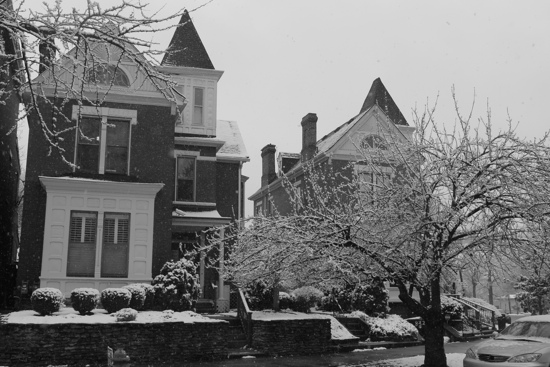
902. Summary Judgment Reversed on Appeal; Torts. Slip and Fall, Premises Liability, Ice and Natural Hazards
Ollie Barker vs. John D. Northcutt
Rowan County, Judge William Evans Lane
Not to be Published, 9/20/2013
Here is the summary judgment portion of the opinion detailing the standard and the opposing party’s burden:
At the outset we note that the applicable standard of review on appeal of a summary judgment is, “whether the trial court correctly found that there were no genuine issues as to any material fact and that the moving party was entitled to judgment as a matter of law.” Scifres v. Kraft, 916 S.W.2d 779, 781 (Ky. App. 1996). Summary judgment “shall be rendered forthwith if the pleadings, depositions, answers to interrogatories, stipulations, and admissions on file, together with the affidavits, if any, show that there is no genuine issue as to any material fact and that the moving party is entitled to judgment as a matter of law.” Kentucky Rules of Civil Procedure (CR) 56.03. The trial court must view theecord “in a light most favorable to the party opposing the motion for summary judgment and all doubts are to be resolved in his favor.” Steelvest v. Scansteel Service Center, Inc., 807 S.W.2d 476, 480 (Ky. 1991). Summary judgment is proper only “where the movant shows that the adverse party could not prevail under any circumstances.” Id. However, “a party opposing a properly supported summary judgment motion cannot defeat that motion without presenting at least some affirmative evidence demonstrating that there is a genuine issue of material fact requiring trial.” Hubble v. Johnson, 841 S.W.2d 169, 171 (Ky. 1992), citing Steelvest, supra. See also O’Bryan v. Cave, 202 S.W.3d 585, 587 (Ky. 2006); Hallahan v. The Courier Journal, 138 S.W.3d 699, 705 (Ky. App. 2004).
Since summary judgment involves only legal questions and the existence of any disputed material issues of fact, an appellate court need not defer to the trial court’s decision and will review the issue de novo. Lewis v. B & R Corporation, 56 S.W.3d 432, 436 (Ky. App. 2001). With this in mind we now turn to the issues raised by the parties.
CAPERTON, JUDGE: Ollie Barker appeals from the grant of summary judgment in favor of John D. Northcutt and Northcutt & Son Home For Funerals, Inc. (hereinafter “Northcutt”). After our review of the parties’ arguments, the record, and the applicable law, we agree with Barker that a genuine issue as to a material fact exists precluding summary judgment. Thus, we reverse and remand this matter for further proceedings.
The facts of this case revolve around a slip and fall outside of Northcutt’s Home for Funerals.
On appeal, Barker argues that the trial court erred in granting summary judgment. Northcutt argues: (1) based on longstanding Kentucky law regarding naturally occurring outdoor hazards, the grant of summary judgment was correct; and (2) Barker’s interpretation of Kentucky River Medical Center v. McIntosh, 319 S.W.3d 385 (Ky. 2010) is misplaced.1 With these arguments in mind we turn to our jurisprudence.
In Kentucky, a danger is “obvious” when “both the condition and the risk are apparent to and would be recognized by a reasonable man in the position of the visitor exercising ordinary perception, intelligence, and judgment.” Bonn v. Sears, Roebuck & Co., 440 S.W.2d 526, 529 (Ky. 1969) (citations omitted). “Whether a natural hazard like ice or snow is obvious depends upon the unique facts of each case.” Schreiner v. Humana, Inc., 625 S.W.2d 580, 581 (Ky. 1981).
Barker was aware of the inclement weather. Contrary to the arguments of Northcutt this awareness by itself does not mandate summary judgment. Unlike the plaintiff in Green, it was not until after he fell that Barker could see that ice was present, that it had mounded2 up and that it was plainly visible. We believe that under these facts summary judgment was premature because there is an issue regarding the obviousness of the hazard prior to Barker’s falling. As such, we reverse and remand this matter for further proceedings.
